Introduction
Creating viral content is nearly impossible. It’s a shot in the dark. A once in a lifetime event.
It’s almost an unrealistic, unattainable goal. And let’s face it: creating content takes hours of time, research, and planning.
But here’s the thing. You don’t actually need to create your own content to drive traffic and engagement for your business.
Selling through great content doesn’t mean producing your own branded content.
The chances of you alone creating a viral piece of content are slim, but the chances of others aren’t. When you can pick from millions of people posting great content, viral content is much easier to stumble upon.
In this post, we’ll show you how to curate viral content, capitalize on UGC and use these content mediums to reach six figures in sales in just nine months.
How Wholesome Culture curated viral content and used it drive six-figure sales numbers
Wholesome Culture was founded in 2016 by Audrey Castonguay in Montreal.
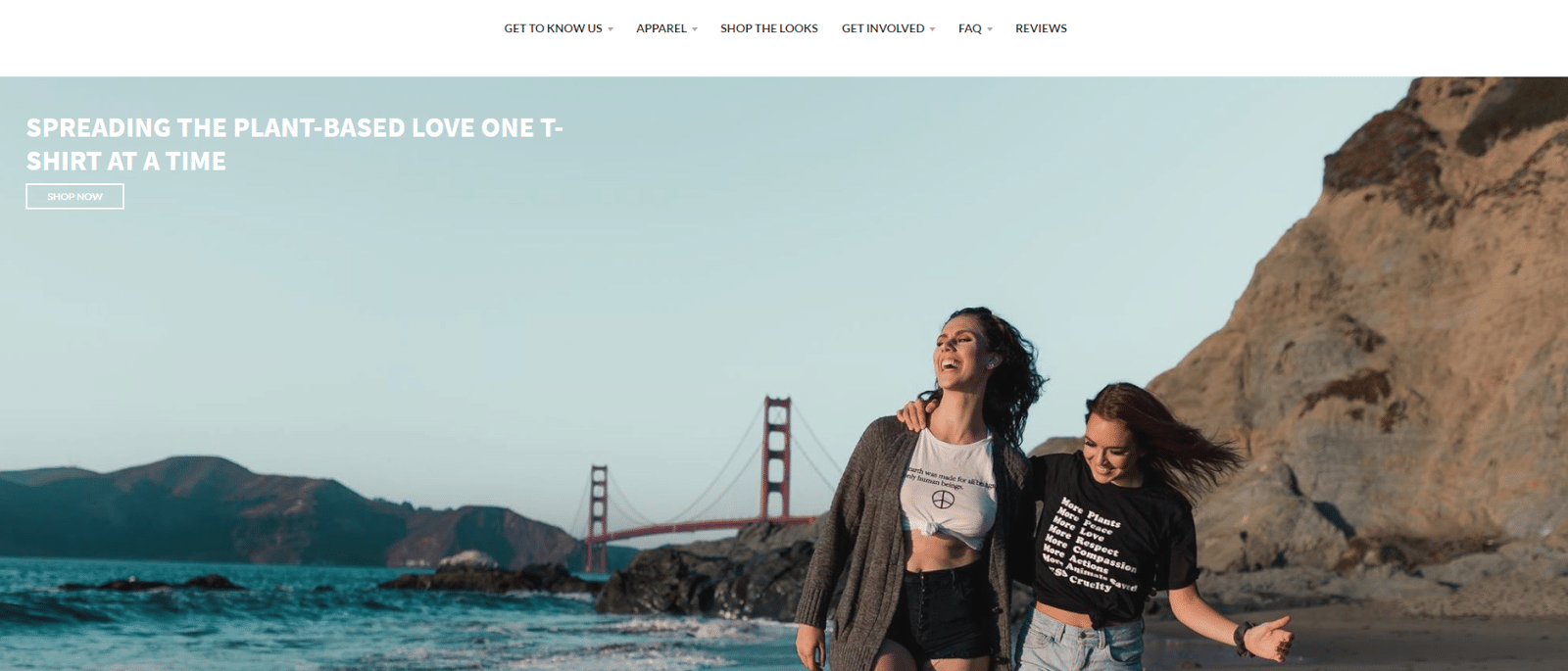
The company is focused on creating and promoting a healthy, plant-based lifestyle. Through clothing, apparel, and accessories, they share the goals and values of creating a plant-focused life and how that can impact the world.
Partnering with various charities and foundations, the company’s mission is educating consumers and providing plant-based diet lovers clothing to express their passion.
When starting, Aubrey thought that moving to creating a plant-based or vegan protein was going to be her goal. With little money to fund it, she decided to focus on something she was more passionate about:
Crafting a message that can reach millions.
And she now does exactly that using her apparel brand.
With Instagram, she has been a notorious sharer of viral content. She curated content from various sources including her own user base and top vegan platforms.
Using this strategy, she has grown her company Instagram to nearly 150,000 followers:



By curating viral content, she can draw massive attention to her page and share content in like-minded industries without having to put in the work to make viral content:
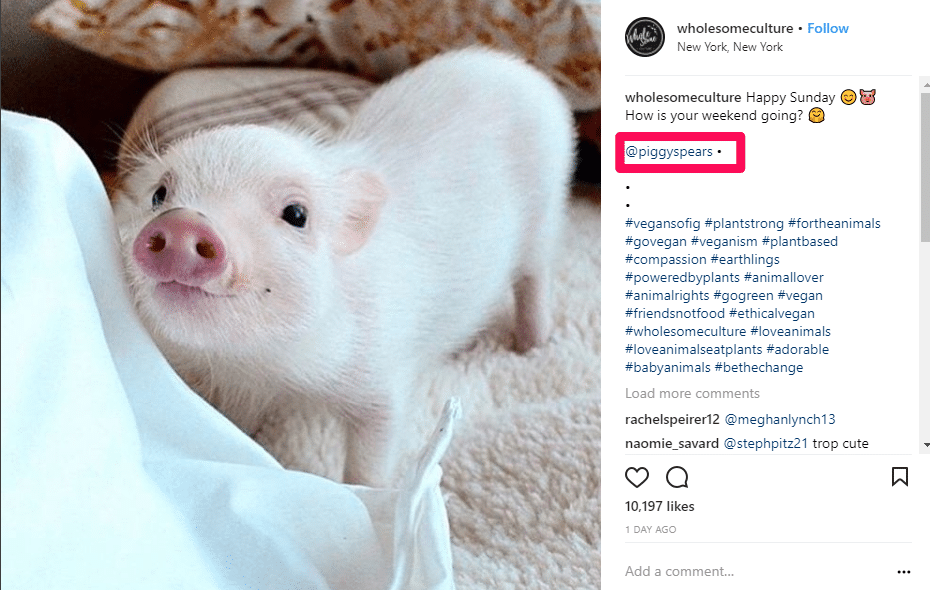


Since viral content is so hard to create, you are far better off sharing and curating that content on your page than trying to create it.
Taking advantage of this strategy, she has been able to produce thousands of likes and comments on each post on her page.
Curating content from users and other related industries who share the same values allows her to give back to her community and also build new connections.
Here’s how you can follow in her footsteps and curate viral content for your own business to reach six figures in sales.
How to curate viral content and use UGC to drive sales
Curating viral content is a great way to drive engagement with your brand. Plus, you can later leverage that new engagement by using remarketing ads.
Here’s how to curate viral content and use UGC to drive sales when coupled with powerful remarketing ads.
Step 1. Assess what “viral” content is
Before curating viral content, it’s critical to understand exactly what viral content is.
It’s often easy to assign a definition of viral content to generic things. For example, the latest craze of Tide Pods.
Content on that went viral, but that content isn’t applicable or acceptable for most businesses to promote and share.
Viral content heavily depends on your industry and niche. You can’t just share any viral content piece and expect great results.
The number one rule in sharing viral content for your own business is ensuring that it relates to your niche.
If you are running a plant-based apparel shop, sharing viral content like a cute baby Kangaroo is hitting the nail on the head:
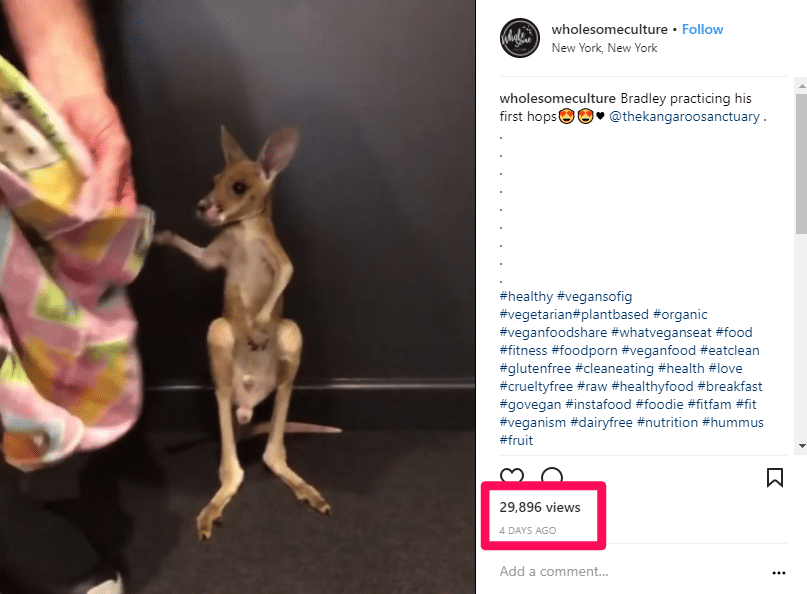


Her audience is clearly into animal welfare and animal rights. So sharing and promoting the safety and comfort of animals is going to resonate, and therefore, become even more viral.
Amassing nearly 30k views in just four days, sharing already existing viral content from others in her niche generates tons of traffic.
A few key components of viral content to look for are as follows:
- Views relative to your niche: how many views does the average video get in your niche? Compare views from your videos to the best competitors, bloggers or influencers in your space to understand how many average views a video gets. Then, find content that has 2-3x more views.
- Engagement: views are great, but how many likes and comments did the content get? Were people commenting more than average?
- Tagging others: a huge marker of organic, viral content is how many users are tagging their friends in the comments to view the video. How many shares did it get?
A great way to start digging for viral content in your niche is by picking a hashtag to examine. With sites like Instagram, you can browse popular content by hashtag, seeing which posts have generated the most buzz.
For example, if your business is vegan focused, you can search with the #vegan hashtag:
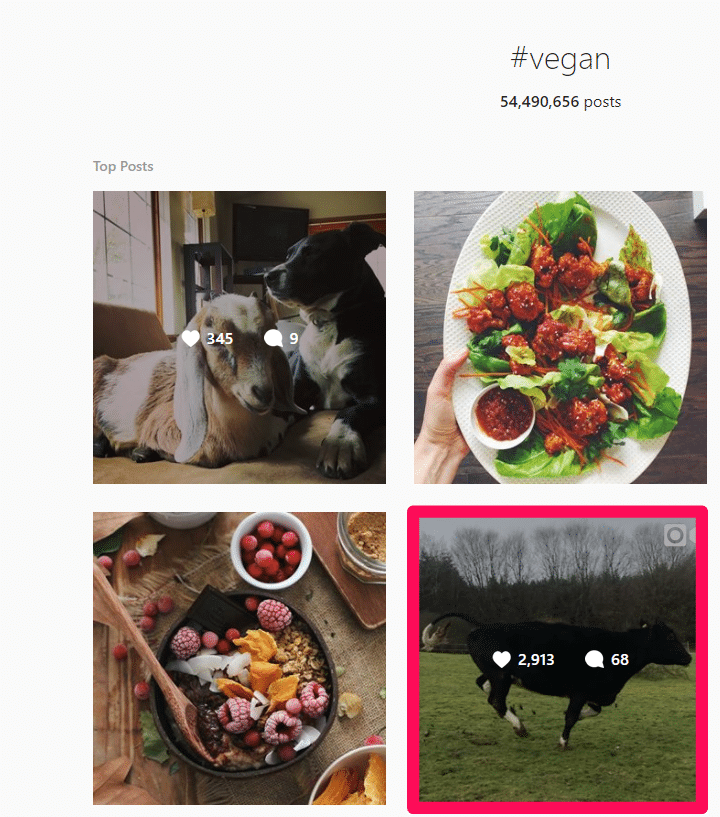


You should be able to pull up tons of organic content in your niche that is getting traction.
For example, this video based post of the cow running has thousands of likes and nearly 10k views in just a few days:
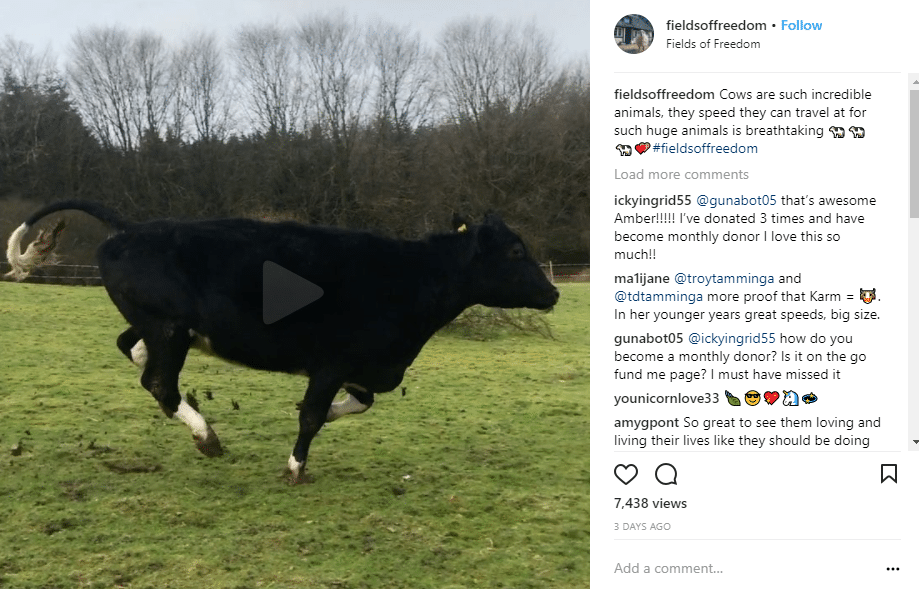


Conduct Google searches to locate a few of the top bloggers or influencers in your space.
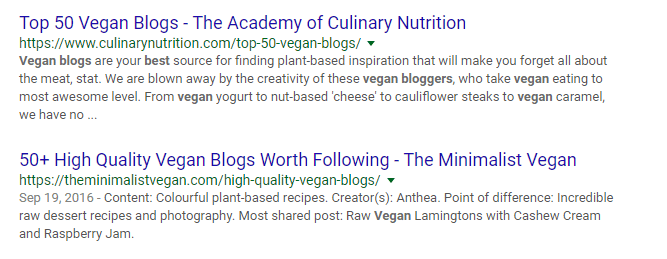


Compile a list and follow them on their social channels. Start to analyze what type of engagement is standard on their page. This gives you a marker for general success and a way to gauge whether your content is viral or not.
If your shares, likes, views and overall engagement start to surpass those baseline numbers, it’s likely viral.
Especially if you have fewer followers.
Find viral content on social media using hashtag searches and benchmark the content to typical engagement. Compile those in a saved database and you can start sharing them on your own channels!
Step 2. Collect user-generated viral content
One of the best aspects of sharing other content is user-generated content. User-generated content is when you take content from another user, typically a customer or fan of your brand, and share that on your social channels.
This is a powerful way to produce engagement and craft brand loyalty between you and customers.
Using a user-generated content strategy, Buffer was able to grow their Instagram account by 540% in a single year. According to the latest data, 84% of millennials report that user-generated content on a company site or social platform influenced their decision to buy.



43% of people are more likely to purchase a new product when they have learned about or seen other users share content relating to it.
Buffer constantly shares UGC on their social profiles, even developing their own hashtag to accompany their campaigns:
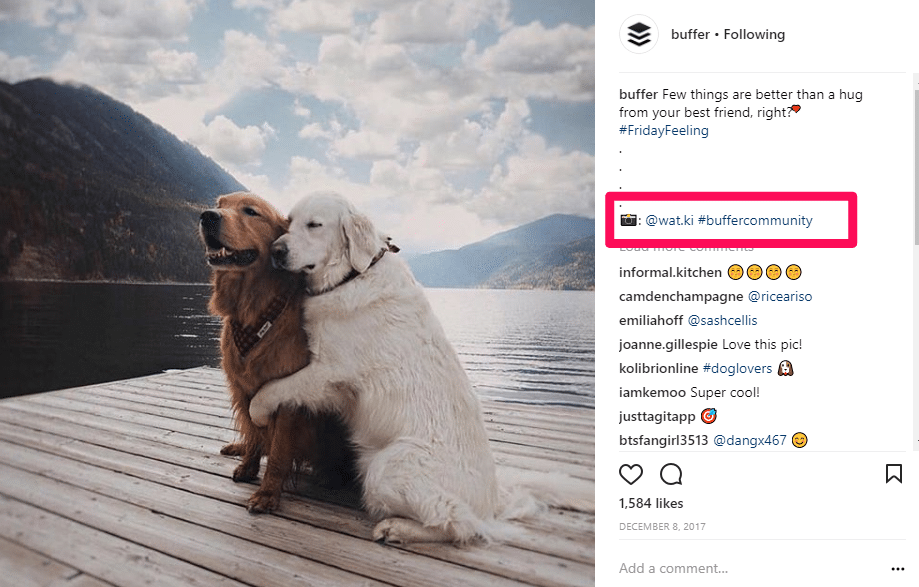


User-generated content, just like content curation, is a form of collecting content from other users to leverage for your own benefits.
You don’t have to spend time creating or developing content. Instead, you seek the best from already produced content, saving you time and effort.
When sharing user-generated content for your business, you need to ensure that the content is great. Meaning it’s already viral or has the potential to go viral.
Here are a few key things to keep in mind when starting a UGC strategy:
1. Share content from your existing fans and followers: this shows appreciation and builds strong customer loyalty
2. Share viral content: see what content your users are creating that is getting traction in terms of likes, shares, and engagement
3. Use a branded hashtag: this will encourage people to participate more. Plus, it helps you curate more content because anyone can use the hashtag to enter their photos.
One of the reasons that Buffer was so successful at using UGC to grow their business accounts was due to the quality of content sourced.



All of the photos shared on their account come from some of the best travel photographers on the planet.
These photos all have viral potential and speak to the ethos of Buffer as a brand. Bad UGC will only net bad results. And unrelated content won’t net any results other than a confused fan base wondering why you are posting that content.
Always stay true to your brand message when sharing content.
A great way to build up your UGC library is to host a simple content promotion or giveaway. One that requires users to upload and share content using your hashtag.
Ask users to post a photo relating to your brand ethos and their personal inspiration. Ensure that they use your branded hashtag and you’ll have thousands of people posting great content for you to choose from.
Using the BufferCommunity hashtag, Buffer has been able to generate thousands of UGC posts from their fans:
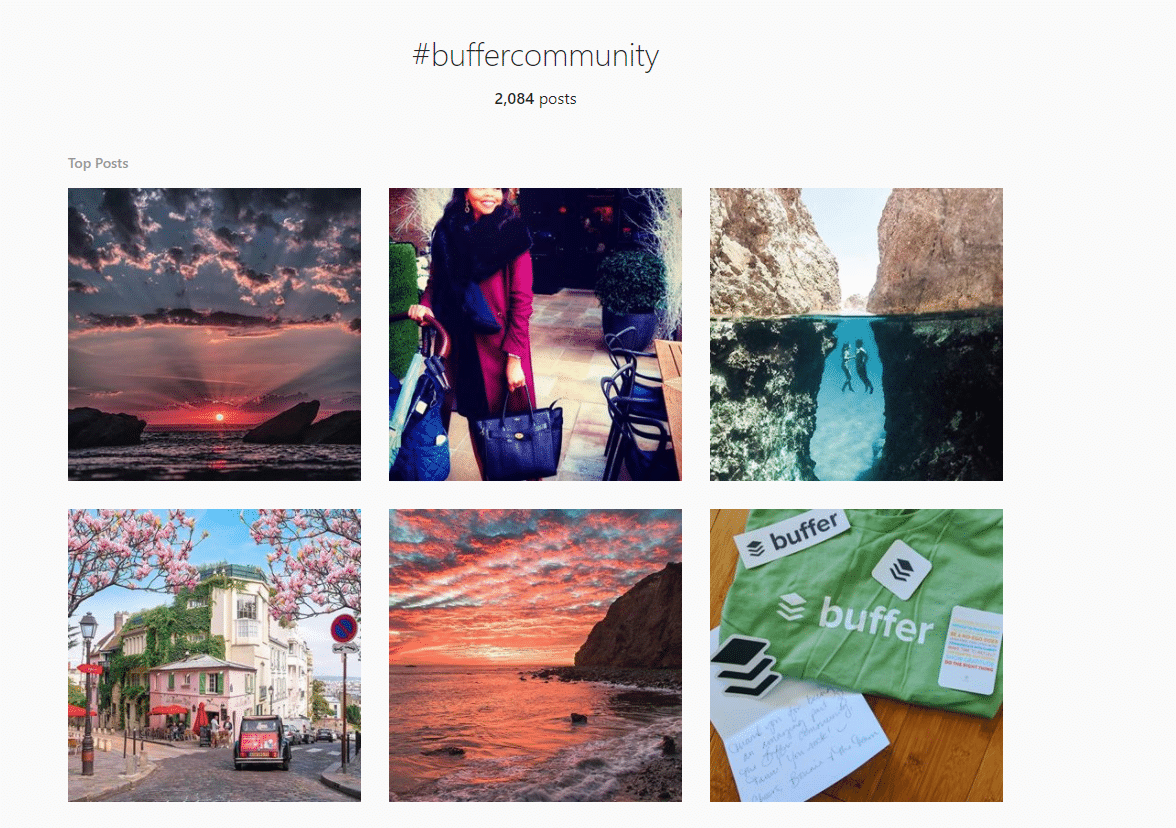


Create giveaways or content promotions that users will want and choose from the best content under your branded hashtags.
Step 3. Curate content on your Facebook Page
Not only does Wholesome Culture have a big Instagram following, but they have an equally as impressive Facebook following.
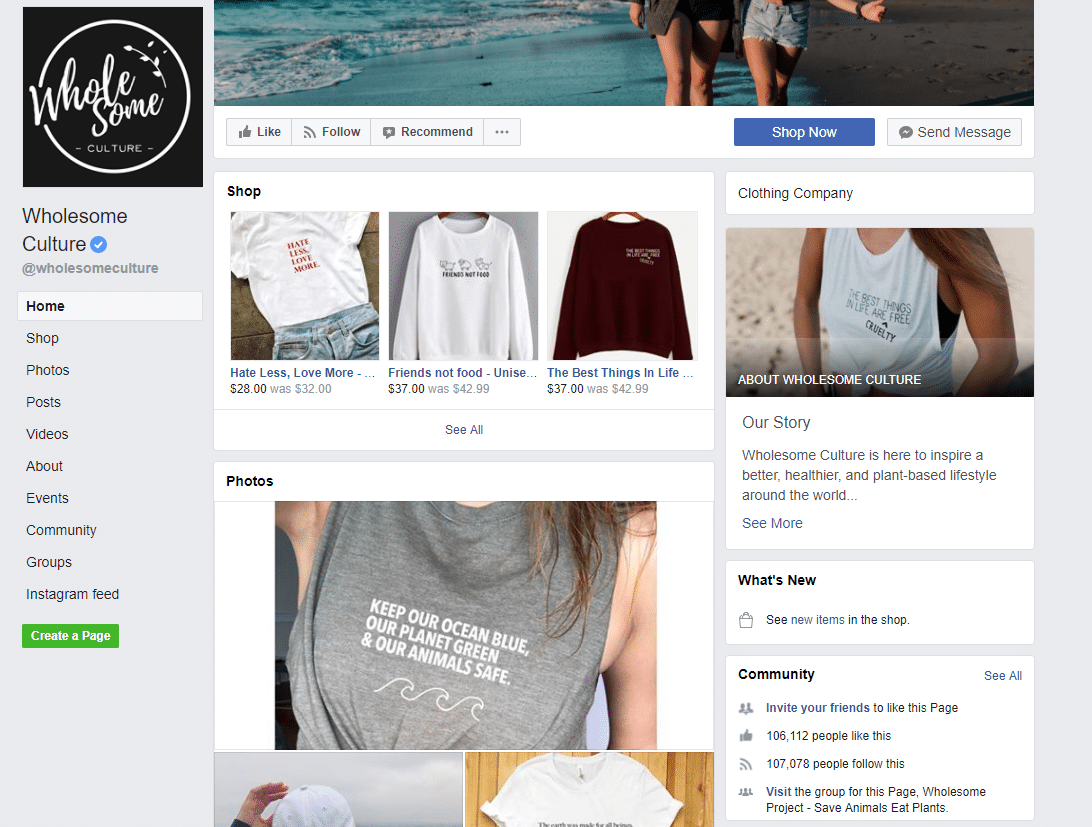


With over 107,000 followers and 106,000 page likes, they share some of the best content around in the vegan / plant-based industry.
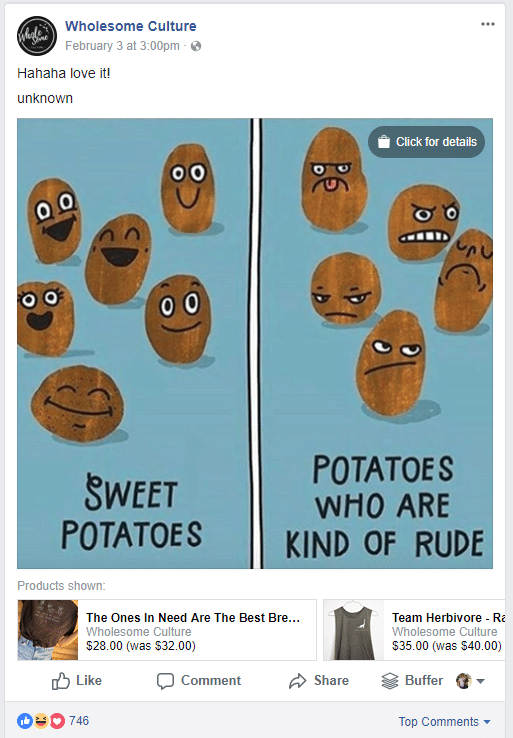


Following a similar strategy, she posts and curates content from other sources rather than just her own content.
Pulling from vegan recipes, bloggers, and outreach programs, she is always tapping into external sources for valuable content.
Not only does she post content directly on her page to her followers, but she also utilized Facebook Groups to drive traffic and curate viral content.
Facebook Groups are one of the best features that have flown under the radar in recent years. In a recent case study, we covered how Providence Lodge is using Facebook Groups to drive 12% check-out conversion rates, with nearly 25% of users adding products to their cart.
With a declining organic reach on Facebook, Groups provide a way to organically talk with customers who love your niche.
Facebook even recently added insights for groups, giving owners more control and analytics data on how they perform.
Groups are selected niche communities on Facebook that all have a specific thing in common. They love the topic of their group and tend to post frequently, engaging with users, products, brands and more.
It’s organic marketing at it’s finest. With a declining reach on typical Facebook posts, Groups are the new way to organically interact with your customers.
They allow users to post messages to group boards and share anything they want.
The Wholesome Culture group has over 2,300 engaged members posting nearly every day:
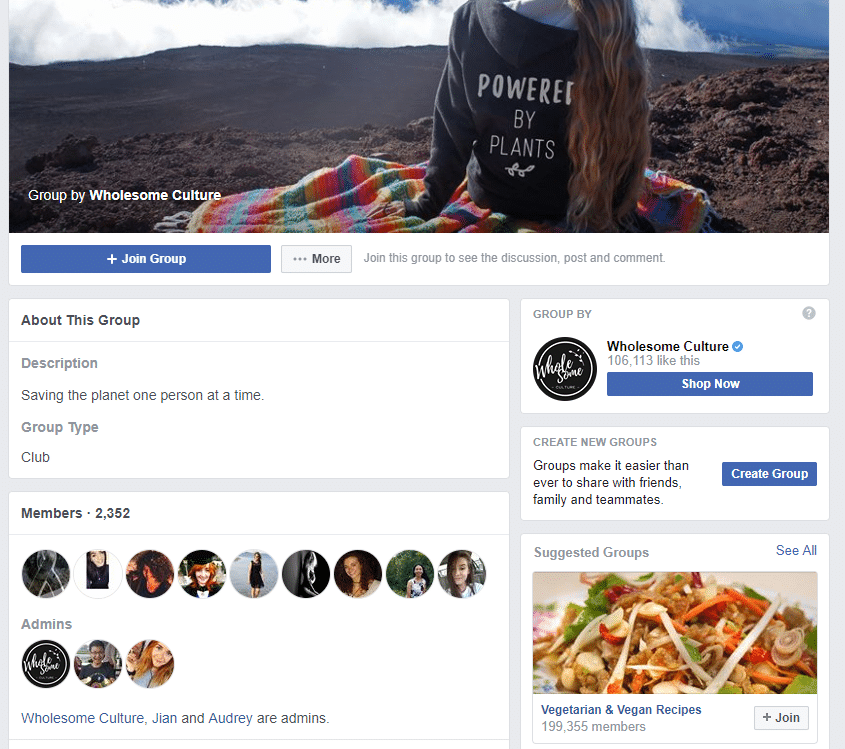


To leverage a group, try locating and sharing viral articles using a tool like Buzzsumo. Simply search for a topic related to your business and share the latest viral content by shares:
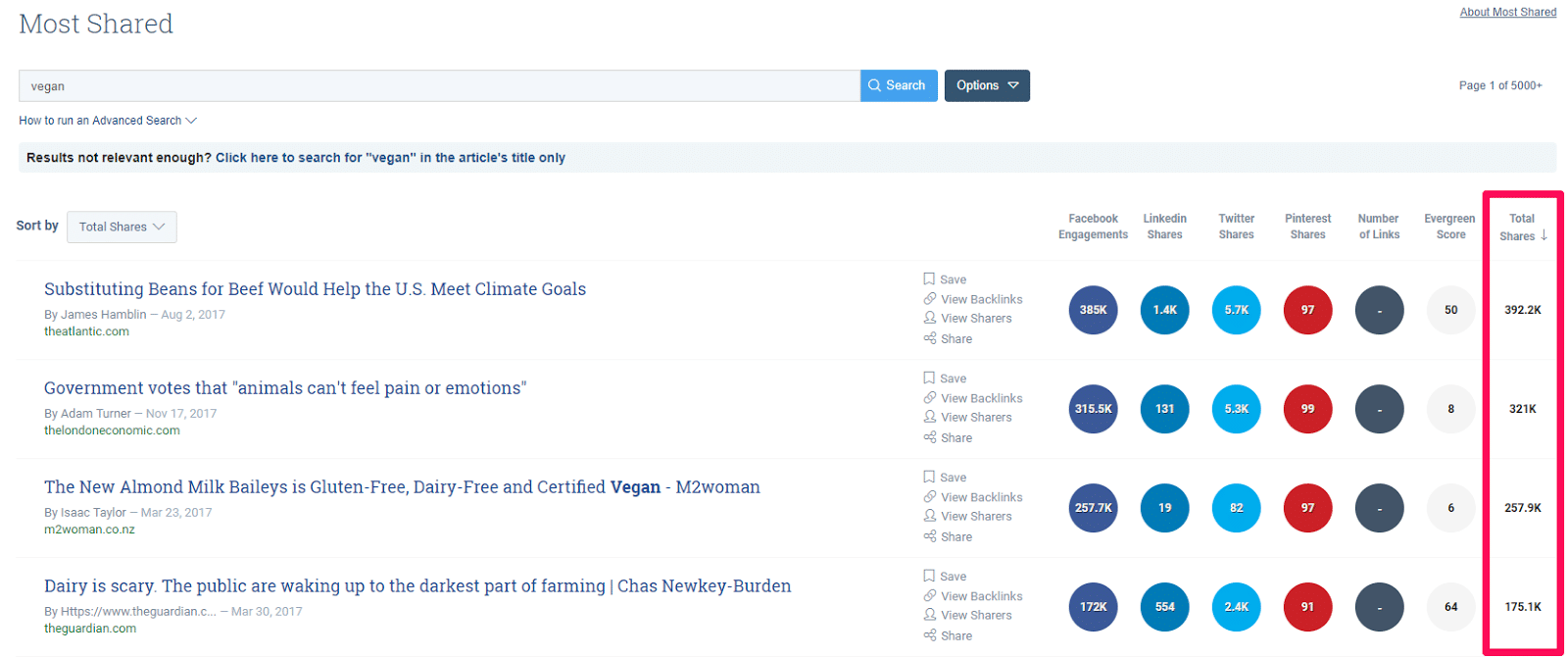


You can quickly drive engagement by posting articles and asking your users to give their opinion or thoughts.
By creating a group that loves to start discussions, you will start to build up a content library of all of their shares.
Encourage users to join and participate in your group by including it as a step in giveaways on your Instagram page.
Use the Facebook Group as a place to share more of the viral content you generate from UGC and Buzzsumo. Stir up conversations and build a loyal community by responding often.
Step 4. Retarget users from your social media to turn them into customers
One of the great things about curating and sharing viral content and UGC is the traffic and engagement boost you can generate.
Sharing viral content is likely to bring in new users simply due to the virality of that content.
Meaning you can easily add new users to a remarketing list that allows you to sell to brand new segments for cheap.
Wholesome Culture was able to do exactly that to grow their business to six figures in nine months. Using viral content as the hook, they would bring in new users and then target them with ads to drive purchase actions.
Using Facebook and Instagram ads, you can easily target interested traffic that engaged with your content to drive sales.
Head to the Facebook Business Manager and navigate to the audience section:
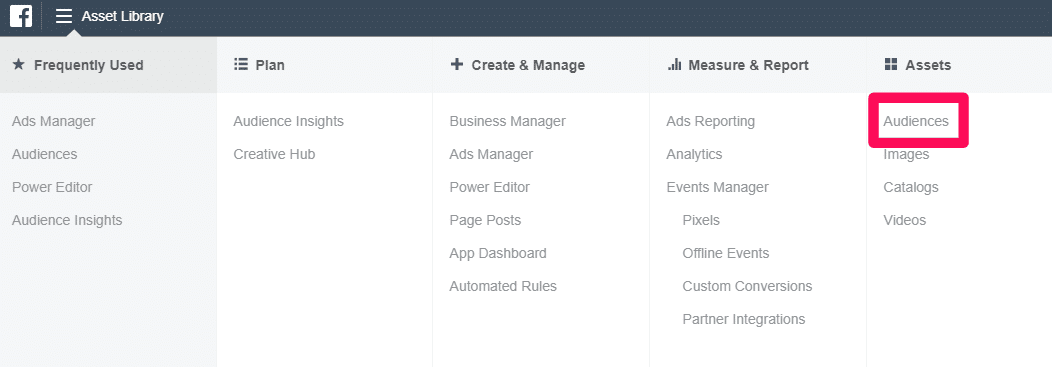


Select to create a new custom audience:
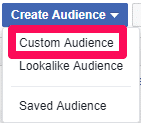


Select the “Engagement” option from the list to target your social traffic coming from viral content:



From the options list, you can either target video-based views on your social profiles or simply the pages themselves:



Choosing video as your audience type will give you diverse targeting options, allowing you to create multiple audiences based on view time:
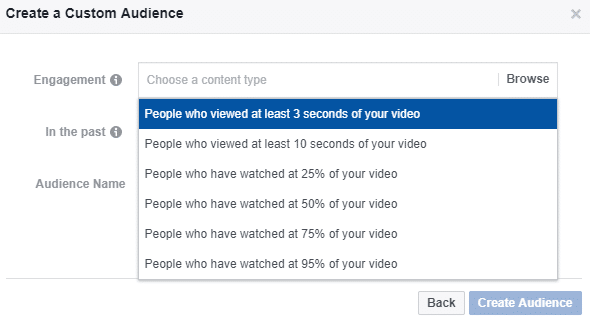


For example, you can target users who watched 95% of the video with a purchase ad, and those who watched 25% with a general brand awareness ad.
Or, you can target new audiences based on Facebook and Instagram engagements:
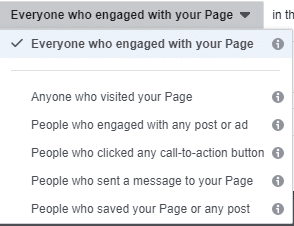


Want to target any page visitor? You can easily do that. Getting more specific, you can target only users who engaged with a post or ad, or clicked on a CTA.
In terms of the ad that you use, always make sure to further press your brand ethos. The viral content you share should be related to your ads.
Check out this ad ran by Wholesome Culture:
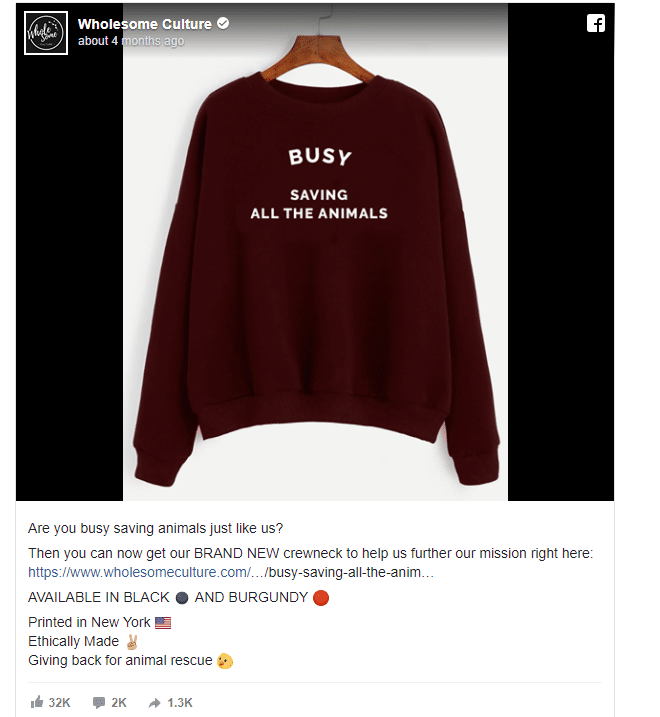


Are you busy saving animals just like us? They perfectly speak to the typical buyer of their brand by touching on their business mission and addressing the user directly.
Continue to portray your brand image in these ads to refinance your brand to new users that came from your viral content.
Recap: TLDR
Creating viral content is one of the toughest things to do. With so much content being shared online, it’s rarely worth the time to attempt to create it.
The best viral content isn’t forced. It simply happens naturally. And that means your time is much better spent curating existing viral content in your industry.
Using user-generated content and your social pages, you can easily feature viral content from your followers and fans, showing both appreciation for their content and amazing viral pieces to grow your following even more.
Start by assessing what viral content is. Using tools like Instagram’s hashtag search or Buzzsumo, you can see how many shares top posts are getting and what the engagement is like.
Next, collect user-generated content from your fans. Mention them in your posts. According to Buffer, they grew their Instagram following by 540% doing this.
Share content that you’ve curated on your Facebook Page and with Facebook groups.
Lastly, retarget all of this new traffic you will generate to head to your site for a sale.
Now It’s Your Turn
You have seen the power that curating viral content and using user-generated content can have for a business.
Now it’s your turn to put those tactics to the test for your own business.
What types of user-generated content campaigns will you run? What tools will you use to collect viral content?

Comments